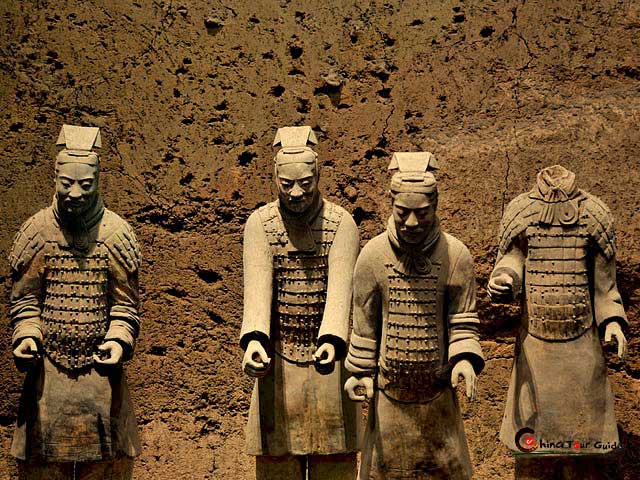Local Xi'an Tours
Terracotta Warriors Pit 3 (Terracotta Army)
As the smallest pit, Pit 3, with high-ranking officers and a war chariot. Outwardly, military officer figures are capped by double or single board hat in various armors. Apart from the difference in clothes, the military officer figures are somewhat different in spirit and bearing of the general figures. Not as big and strong as that of the general figures, the military figures are tall on the whole, with broad shoulders, erected chest and solemn look, showing their quality in diligence thinking and courageous ability all the more.
On the 11th May in 1976, archaeologists discovered Pit 3 in northwest of Pit 1. As the smallest one, Pit 3 is the command post which vary from both pit 1 and pit 2 in structure and content. It can divided into three parts – north, central and south. In the center, it is a battle chariot with four horses and four warriors. There are also 64 warriors with heavy armor standing in both north and south.
 |
 |
| Terracotta Warriors are masterpieces of realism and also of great historical interest. | Terracotta Warriors was listed as UNESCO World Heritage in 1987. |
Most outstanding characters in Pit 3 is the unearthed ancient weapons. Spears, swords, knives can be found in 3 pits, but only a kind of weapon called “Shu” (shaped like spear but without blade) in Pit 3. Shu is powerful weapon in hand-to-hand combat, and often used in honour guard.
In period of the Warring States (475 - 221 BC), the ruler often took sacrifice in order to pray for success before the war. In the rite, the augur drilled a hole on turtle shell or cattle scapula, and then burn it until crack appeared. According to this crack, augur can foresee the result of the war. Unearthed relics in Pit 3 including remains of animals just prove historians’ assumption is right.
Select Other Favorite Attractions
|
|||||||||||||||||||||||||||||||||||
|
|||||||||||||||||||||||||||||||||||
|
|||||||||||||||||||||||||||||||||||
|
|||||||||||||||||||||||||||||||||||
|
|||||||||||||||||||||||||||||||||||
|
|||||||||||||||||||||||||||||||||||
Guide for China tour, offers most value & amazing experience. In China, you can rely on us
Copyright © 2001 - 2025. All Rights Reserved to ChinaTourGuide.Com
Hotel Guangzhou | Guizhou Tours | Hong Kong Hotels | 香港酒店 | 广州酒店 | 广州会议酒店 | Indochina Tour
Guide for China tours, offers most value & amazing experience. Chinatourguide.com. Your reliable China tour agency.




